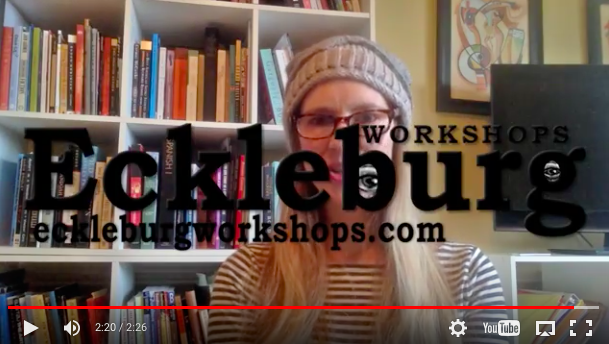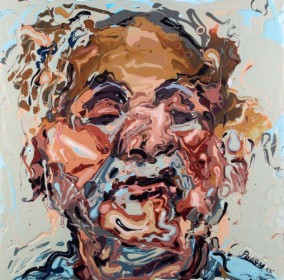Please Check Out Our Free Submissions Guidelines Workshop
SUBMISSIONS OPEN: SUBMITTERS
ARE READERS, TOO, FUNDRAISER
Purchase a copy of Eckleburg No. 19 and submit to Eckleburg while supporting your favorite contributor!
GS AWARD SUBMISSIONS OPEN
ECKLEBURG BOOK CLUB OPEN
SELFIE INTERVIEWS OPEN
“It’s a fantastic issue. The most exciting and adventurous and gutsiest new magazine I’ve seen in years.” Stephen Dixon
“Refreshing… edgy… classic… compelling.” Flavorwire
“Progressive….” NewPages
“Eye-grabbing… fun… bold… inviting… exemplary.” Sabotage
Listed among Wigleaf’s Top 50 (Very) Short Fictions 2012
“Eclectic selection of work from both emerging and established writers….” The Washington Post
Proud member of the Council of Literary Magazines and Presses.
Supporter of VIDA: Women in the Literary Arts.
NOTICE BOARD
READ. If you plan to submit work to The Doctor T. J. Eckleburg Review, please read the journal first. Read not just one story but several. Eckleburg is eclectic, literary mainstream to innovative. There’s no way to sum us up in one story or even a single issue. SUBMISSION PHILOSOPHY. At Eckleburg, we recognize that writers grow in their crafts the more they read and write. If we do not accept your submission, it does not mean we will not accept a later submission. We do sometimes give personal feedback on declined submissions, though, this is not often, and should not discourage you from submitting to us again. We simply receive too many submissions to provide personalized feedback to everyone. FUNDRAISERS. During the winter and summer months, Eckleburg will shut down regular submissions and offer our SUBMITTERS ARE READERS FUNDRAISER where submitters/readers can support Eckleburg‘s nonprofit mission by purchasing a print or digital copy while submitting. Thank you to our submitters, readers and contributors for your support of Eckleburg. We are honored to have you.
FICTION
We accept previously unpublished and polished prose up to 8,000 words year round, unless announced otherwise. We are always looking for tightly woven short works under 2,000 words and short-shorts around 500 words. No multiple submissions but simultaneous is fine as long as you withdraw the submission asap through the submissions system. Please do not email the editors to withdraw your submission. The submissions link is at the bottom of this page. Please check out our free “Submissions Guidelines Workshop” prior to submitting.
Note: We consider fiction (and poetry) that has appeared in print, online magazines, public forums, and public access blogs as being published. Rarely do we accept anything already published and then only by solicitation. Once the piece is published in Eckleburg, the author is welcome to re-publish the work anywhere and everywhere. In these cases, we ask that the original publication be credited each time to The Doctor T. J. Eckleburg Review. One rare exception is our annual Gertrude Stein Award, which allows for submissions of previously published work.
ANNUAL GERTRUDE STEIN AWARD IN FICTION
1st Prize $1000 and publication. Accepting entries year round. Eligibility: All stories in English no more than 8,000 words are eligible. No minimum word count. Stories published previously in print or online venues are eligible if published after January 1, 2011. Stories can be submitted by authors, editors, publishers, and agents. Simultaneous and multiple submissions allowed. Each individual story must be submitted separately, with separate payment regardless of word count. Eckleburg editors, staff, interns and current students of The Johns Hopkins University are not eligible for entry. READ MORE & SUBMIT FOR THE GS AWARD HERE.
ANNUAL FRANZ KAFKA AWARD IN MAGIC REALISM
1st prize $1000 and publication. Accepting entries year round. Eligibility: All stories in English and magic realism no more than 8,000 words are eligible. No minimum word count. Stories published previously in print or online venues are eligible if published after January 1, 2011. Stories can be submitted by authors, editors, publishers, and agents. Simultaneous and multiple submissions allowed. Each individual story must be submitted separately, with separate payment regardless of word count. Eckleburg editors, staff, interns and current students of The Johns Hopkins University are not eligible for entry. READ MORE & SUBMIT FOR THE FK AWARD HERE.
NOVEL AND STORY COLLECTION MANUSCRIPTS
We publish short works at The Doctor T. J. Eckleburg Review. At this time, we do not publish novel, long memoir, essay collections, story collections or poetry collections at The Doctor T. J. Eckleburg Review. We do offer manuscript workshops at The Eckleburg Workshops. If you are looking to place a manuscript, we can suggest several excellent small and large presses whose excellent books are promoted through our Eckleburg Book Club — i.e., Random House, Graywolf Press, Coffeehouse, Tinhouse, St. Martins Press and more.
–
POETRY
We are now accepting previously unpublished poetry of all forms. Please submit 1 – 5 poems as separate files in separate submissions. Please do not submit them all on one document. Please check out our free “Submissions Guidelines Workshop” prior to submitting.
Note: We consider poetry (and fiction) that has appeared in print, online magazines, public forums, and public access blogs as being published. Rarely do we accept anything already published and then only by solicitation. Once the piece is published in Eckleburg, the author is welcome to re-publish the work anywhere and everywhere. In these cases, we ask that the original publication be credited each time to The Doctor T. J. Eckleburg Review. The submissions link is below.
POETRY COLLECTION MANUSCRIPTS
We publish short works at The Doctor T. J. Eckleburg Review. At this time, we do not publish novel, long memoir, essay collections, story collections or poetry collections at The Doctor T. J. Eckleburg Review. We do offer manuscript workshops at The Eckleburg Workshops. If you are looking to place a manuscript, we can suggest several excellent small and large presses whose excellent books are promoted through our Eckleburg Book Club — i.e., Random House, Graywolf Press, Coffeehouse, Tinhouse, St. Martins Press and more.
NONFICTION
We accept polished creative nonfiction/essays up to 8,000 words year round, unless announced otherwise. Preferences veer toward shorter works under 1500 words with an arts and culture focus. If you wish to include a bio, keep it short, under 200 words. Please check out our free “Submissions Guidelines Workshop” prior to submitting.
ANNUAL ANAĬS NIN AWARD IN NONFICTION
Coming soon… Accepting entries year round. Eligibility: All stories in English and nonfiction no more than 5,000 words are eligible. No minimum word count. Essays published previously in print or online venues are eligible if published after January 1, 2011. Essays can be submitted by authors, editors, publishers, and agents. Simultaneous and multiple submissions allowed. Each individual story must be submitted separately, with separate payment regardless of word count. Eckleburg editors, staff, interns and current students of The Johns Hopkins University are not eligible for entry. Coming Soon…
ESSAY COLLECTIONS AND MEMOIR MANUSCRIPTS
We publish short works at The Doctor T. J. Eckleburg Review. At this time, we do not publish novel, long memoir, essay collections, story collections or poetry collections at The Doctor T. J. Eckleburg Review. We do offer manuscript workshops at The Eckleburg Workshops. If you are looking to place a manuscript, we can suggest several excellent small and large presses whose excellent books are promoted through our Eckleburg Book Club — i.e., Random House, Graywolf Press, Coffeehouse, Tinhouse, St. Martins Press and more.
GALLERY | Visual and Intermedia Artwork
Send us a link for your online portfolio that includes all the works (at least 3, 10 or more even better) that you would like us to consider for the Gallery. You can also send a 100 to 200 word bio. If accepted, we will request attached, high resolution jpegs of the chosen works. The submissions link is below.
Music, Film and Arts Commentary | Send a YouTube link via email along with a short 100 to 200 word bio. The submissions link is below.
REVIEWS
Eckleburg is not accepting ARCs or press releases for books at this time. Some members of our editorial staff and some of our contributors write reviews for other venues such as The New York Times, Washington Post, New York Journal of Books, Washington Independent Review of Books and more and will post notices of these reviews at Eckleburg; however, our editors work directly with the outside venue editors in acquisition and assignment of these reviews. It is a common practice at these venues that reviewers review only work by authors who the reviewer does not know personally or work with personally. Please do not contact our editors about press releases or reviews of your book for Eckleburg. You should contact the review venues directly. We are, however, very happy to consider your book for our Book Club and/or an excerpt of your published book for Eckleburg publication, please see below information at Book Club. Please check out our free “Submissions Guidelines Workshop” prior to submitting. We also offer several review writing workshops.
THE ECKLEBURG BOOK CLUB
Send your book cover, publication information and short excerpt to the Eckleburg Book Club.
- Please forward a jpeg of just the front cover, not the full jacket;
- Do not ask us if you may send us your book cover and information, etc., just submit it through the submissions system;
- Please forward publisher, cover artist, blurbs, a short excerpt (a chapter, short story or poem) we may run with the book, as well as all copyright information typed into the email, not as part of the back cover;
- We are not accepting self-published books, etc. If you own the publishing company or work integrally as a regular staff editor (as opposed to guest editor) with the publishing company that published your book, Eckleburg considers your book to be self-published;
- SUBMIT to The Eckleburg Book Club.
RIGHTS & COMPENSATION
RIGHTS | If accepted, you are granting Eckleburg first North American serial, promotional, non-exclusive anthology (online and possibly print), and archival rights. Copyright reverts to the author upon publication. If the piece is subsequently published in another venue, we ask you to source The Doctor T. J. Eckleburg Review as first publication. All fiction, poetry, nonfiction and visual art submissions will be considered for our annual print. Authors of works that are accepted for the print will be contacted by the editors.
PAYMENT | Print contributors receive a free copy. Print contributors who are also Eckleburg award winners receive award prize money up to $1000.
ADOPT A WRITER | We are running the Adopt a Writer program, where writers, poets and artists published in our online archives can sign up and receive 60% of reader gifts made through the individual contributor’s work url. To participate, the contributor must have a PayPal email and account. Contributors can sign up upon acceptance and also afterward on their site url page. If you have a work published at Eckleburg, go to your work’s url and submit your information there.
RESPONSES | Response times are now running three months or longer. If we haven’t responded by six month’s time, please send us an email here.
AWARDS | Editors will nominate works at appropriate times through the year. Individual authors/poets who are nominated will be contacted privately.
WITHDRAWALS | Please withdraw your submission through your personal Submittable account created upon submitting. This is your personal account and Eckleburg editors do not have access to it.
THE SELFIE INTERVIEW | All contributors past, present and future are invited to complete The Selfie Interview. The Selfie Interview is also open to readers/writers who have not been published at Eckleburg.
SUBMISSIONS OPEN: SUBMITTERS ARE READERS, TOO, FUNDRAISER
Purchase a copy of Eckleburg No. 19 and submit to Eckleburg while supporting your favorite contributor!
Proud member of the Council of Literary Magazines and Presses.
Supporter of VIDA: Women in the Literary Arts
Subscribe to the Eckleburg Newsletter





